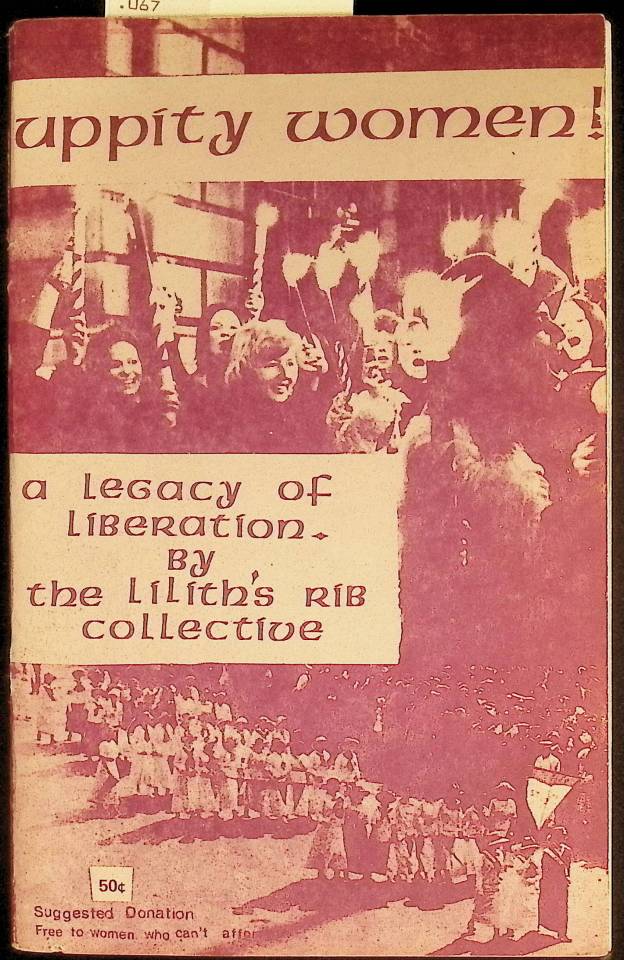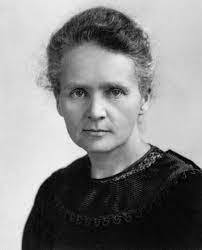#marie sklodowska curie
Text
Marie Meloney describes her struggle to convince Marie Skłodowska-Curie to write her own autobiography in the introduction to Marie Curie's biography of her husband Pierre Currie.
Marie Curie needed significant persuasion to write about her own life and referred to the Curies' maxim that "in science we should be interested in things, not persons" to argue against it. She eventually agreed to write autobiographical notes that were included at the end of the book. She opens by reiterating that she had to be convinced to write them and describes the idea as alien to her.
Her attitude towards writing about her husband is entirely different. She described hesitation in writing his biography but only because she didn't know him in his youth and she wished there was someone who knew him intimately throughout his life to recount it.
There was never a question for her that his biography should be written. She hoped that it would conserve his memory and "remind those who knew him of the reasons for which they loved him".
Her general aversion to biographical writing falling away when it's about her husband instead of herself is such a profound expression of love that it almost made me cry.
#her love for him suffuses the entire book#marie curie#pierre curie#marie sklodowska curie#I read this book earlier this week and really enjoyed it#it's short too so can be read quickly
177 notes
·
View notes
Text

Uppity Women: A Legacy of Liberation (1974) by the Lilith's Rib Collective at Hunter College
From the introduction:
We are a group of women students at Hunter College who are working for the implementation of a Women's Studies Department at Hunter. Given an enrollment that is 73% women and a long background as a women's college, we feel that it is time for us to learn about our HERitage and with this goal in mind we are working both politically and educationally.
We have chosen to name ourselves after Lilith. She was first mentioned in Assyrian myths as a wind spirit and later played a major part in early Hebraic lore. She is mentioned in the Alphabet Ben Sira as the first woman, created simultaneously with Adam. Being thus created, Lilith refused to accept Adam's claim of supremacy and left him, after refusing to lie beneath him during intercourse. She went to live by the Red Sea. We have chosen her as a symbolic starting point to our heritage.
Our motivation to write this book comes out of our own experiences as women. It is an effort to connect with a rich past that has been denied us. Our purpose is to briefly introduce you to some of these women whose lives have been lost to us and who were the Foremothers of our Woman's Culture. We hope that this will encourage you to rediscover Women's history and to participate in the struggle that lies ahead.
In Sisterhood,
The Lilith's Rib Collective
It includes biographies of Susan B. Anthony, Mary McLeod Bethune, Marie Sklodowska Curie, Isadora Duncan, Amelia Earhart, Emma Goldman, the Grimké Sisters, Anne Hutchinson, Mother Jones, Maria Mitchell, Esther Hubart Morris, Emmeline Goulden Pankhurst, Sacajewa, Margaret Higgins Sanger, Gertrude Stein, Lucy Stone, Sojourner Truth, Harriet Ross Tubman, Mercy Otis Warren, and Victoria Woodhill.
The Browne Popular Culture Library (BPCL), founded in 1969, is the most comprehensive archive of its kind in the United States. Our focus and mission is to acquire and preserve research materials on American Popular Culture (post 1876) for curricular and research use. Visit our website at https://www.bgsu.edu/library/pcl.html.
#bgsu#libraries on tumblr#women's history month#uppity women#lilith's rib collective#hunter college#Susan B. Anthony#Mary McLeod Bethune#Marie Sklodowska Curie#Isadora Duncan#Amelia Earhart#Emma Goldman#the Grimké Sisters#Anne Hutchinson#Mother Jones#Maria Mitchell#Esther Hubart Morris#Emmeline Goulden Pankhurst#Sacajewa#Margaret Higgins Sanger#Gertrude Stein#Lucy Stone#Sojourner Truth#Harriet Tubman#Mercy Otis Warren#and Victoria Woodhill#marie curie
11 notes
·
View notes
Text
Me seeing English media cutting off once again Skłodowska from Marie Skłodowska - Curie name

#kino memes#im so tried of this#its not even hard name to pronounce#and is still very readable if you put L instead of Ł#marie sklodowska curie#polish tag
2 notes
·
View notes
Link
Biografia de Marie Sklodowska Curie, cujo mérito era de algum modo negligenciado pelo seu sexo, encontra em Pierre Curie um companheiro que a auxilia em termos de condições físicas, como de conhecimento. Juntos descobrem técnicas para isolar isótopos radioativos, e dois outros elementos; o polônio e o rádio, que abrem um novo campo de pesquisa para a ciência.
No filme prevalece o aspecto humano, a relação amorosa, familiar e laboral, em detrimento do aspecto científico, que acaba por ser apresentado de modo fugaz no último terço do filme. Termina com Curie e a sua filha a desenvolver o raio X para auxiliar os feridos de guerra.
#2019#marjane satrapi#biography#marie sklodowska curie#lauren redniss#united kingdom#france#usa#china#hungary#science
0 notes
Text
sometimes I think all of my problems can be explained by the fact that my mother unknowingly brought a small sample of radioactive material into the house in 2003 and it’s just been sitting there in the basement ever since
#thinking about radiation tonight#marie sklodowska-curie and I share more than a birthday I think#anyway#shut up Rachael
2 notes
·
View notes
Text
diversity win! the german and irish-american neighborhood that started a riot over integrated housing that turned polish is now mexican! and they have great burritos!
2 notes
·
View notes
Text
Interesting fact I think you didn't know (and which I've learned from my chemistry teacher that worked in different branches of the industry his entire life):
Czech people are kind of radiation resistant because we literally live on radioactive soil (the entire country is filled with uranium. When Marie Sklodowska Curie discovered radiation, she was using Czech uranium).
And that's also why we handled the Chernobyl radiation so well - we're used to it and basically immune to it.
That's right folks, Czechs are basically radioactive
#čumblr#czech#chemistry#science#fun facts#czech republic#uranium#radiation#Maybe that's why we're so toxic? Haha#I'm sorry but the pun opportunity was right there
2K notes
·
View notes
Text


I don't photograph my fishtank friends much (mostly because the photos always universally suck) but I don't think I introduced the axie.
When I left my work from home gig I turned my former computer station into another fish tank stand. This cute axolotl is a green flourescent protein axololt.
What that means is they've had glowing proteins from jellyfish inserted into their genome. Axolotl are common laboratory animals, and when lab animals are bred they often have the glow gene attached to whatever other trait the lab is trying to introduce, so you can tell just by looking at your stock if they've inherited the correct gene for your project or not.
GFP axolotl have also made their way into the pet world from lab settings, and private breeders often have them available, which is where this cute female came from.
Her name is Curie (after Marie Sklodowska Curie)
97 notes
·
View notes
Note
For every round that Curium, Radium, or Polonium survives, I’ll send in another fact about Marie Curie, the woman who discovered Radium and Polonium and who Curium is named after. Deal? Deal.
Maria Sklodowska was a Polish woman born in November 1867. She eventually married Pierre Curie, and they had two daughters together. Pierre eventually died after getting his head crushed like a melon under a carriage, and Marie died in 1934 of leukemia due to, guess what, radioactive exposure. More to come 👍
a compelling reason to keep those elements in play, anon
44 notes
·
View notes
Text
“I organized a small class for the children of the village who could not be educated under the Russian government. In this the oldest daughter of the house aided me. We taught the little children and the girls who wished to come how to read and write, and we put in circulation Polish books which were appreciated, too, by the parents. Even this innocent work presented danger, as all initiative of this kind was forbidden by the government and might bring imprisonment or deportation to Siberia.”
Marie Skłodowska-Curie
#marie curie#marie sklodowska curie#quotes#Marie Curie 'my life isn't that interesting who would want to read about it'#Also Marie Curie 'let me tell you about the time I organized illegal classes to educate children in Poland'
2 notes
·
View notes
Text
DO YOU KNOW......?

Radioactive
This is the tomb of Marie Sklodowska-Curie, located in the Panthéon in Paris. What sets this tomb apart is its unique reinforcement with an inch-thick layer of lead. This measure was taken to shield the public from the lingering radiation that continues to emanate from her remains. Marie Curie, a French-Polish scientist, achieved remarkable feats in her lifetime. She was the recipient of the Nobel Prize in Physics in 1903 and later, in 1911, the Nobel Prize in Chemistry. Notably, she holds the distinction of being the first woman to ever receive a Nobel Prize, the only person to win Nobel Prizes in two distinct scientific fields, and the first to win two Nobel Prizes.
Despite facing adversity, including being barred from higher education due to her gender, Curie persisted in her pursuit of knowledge. She resorted to attending a clandestine institution known as the “Flying University” to further her education. Marie Curie is renowned for her groundbreaking discovery of the radioactive elements radium and polonium, as well as coining the term “radioactivity.” Unbeknownst to her at the time, her close work with radium led to her inadvertent exposure to harmful radiation, ultimately contributing to her death in 1934 from aplastic anemia.
Remarkably, Curie’s body, along with her personal possessions such as cookbooks, clothing, furniture, and lab notes, is expected to remain radioactive for another 1,500 years.
21 notes
·
View notes
Text
a while ago (November 7) it was Marie Sklodowska-Curie's birthday. I was celebrating by listening to Charming Disaster's Our Lady of Radium (like five times in a row), thinking about science, and drawing smth about alchemy
lyrics are from Eat Drink Sleep by Charming Disaster (which is awesomely heartbreaking)

a character from my own story who could... relate. living in a fantasy setting gives her some privileges, like after a couple of years, dozens of difficult magical decisions and about a hundred horrifying sacrifices she'll happen to meet her beloved colleague again. so she is more lucky. but I'm really really bad at drawing real people and I guess if you are inspired it can be counted too.
9 notes
·
View notes
Quote
“La vida no merece que uno se preocupe tanto”
Marie Curie

María Salomea Sklodowska-Curie, fue una científica polaca nacionalizada francesa, nacida en Varsovia en noviembre de 1867.
Fue pionera en el campo de la radiactividad y la primera en recibir dos premios Nobel en distintas especialidades, física y química.
Nació en lo que antes era el Zarato de Polonia, un territorio administrado por el imperio ruso.
Fue la quinta hija de un profesor de enseñanza media en Física y Matemáticas y su madre era maestra, pianista y cantante.
Tanto la familia de su padre como la de su madre habían perdido sus propiedades y fortunas durante las sublevaciones nacionalistas polacas, por lo que María y sus hermanas habrían de luchar para salir adelante en la vida.
María estudió en la clandestinidad en la universidad de Varsovia. A la edad de 24 años, siguió a su hermana mayor a Paris en donde culminó sus estudios y llevo a cabo trabajos científicos mas sobresalientes.
En 1894 María conoció a Pierre Curie con quien se casó en 1897. Tras el nacimiento de su primera hija, María se propuso realizar su tesis doctoral sobre los trabajos del físico Henri Becquerel, quien había descubierto que las sales de uranio emitían unos rayos de naturaleza desconocida.
Los estudios sistemáticos de María Curie incluyeron algunos minerales como el uranio y llegó a la conclusión de que existían otras sustancias mucho más radiactivas, por lo que emprendió una búsqueda de sustancias adicionales que emiten radiación, y así en 1898, el matrimonio Curie publicó en conjunto, un artículo en el que anunciaba la existencia de un elemento al que llamaron “Polonio” en honor a Polonia, y en diciembre del mismo año, anunciaron la existencia de un segundo elemento llamado “radio” que en vocablo latino significa rayo y del que se acuñó la palabra radiactividad.
Entre 1898 y 1902, los Curie publicaron de manera conjunta o por separado un total de 32 trabajos científicos, entre ellos uno, en el que anunciaban que al ser expuesto un humano al radio, las células enfermas y formadoras de tumores eran destruidas mas rápido que las células sanas.
En 1900 María Curie se convirtió en la primera mujer en ser nombrada catedrática de la Escuela Normal Superior, y su marido recibió una cátedra en la Universidad de Paris. A partir de 1903, el matrimonio empezó a padecer sus primeros problemas de salud.
En 1903 Marie Curie junto con su esposo y Henri Becquerel, recibieron el Premio Nobel de Física como un reconocimiento a sus extraordinarios servicios rendidos en sus investigaciones conjuntas sobre los fenómenos de radiación.
En 1911 en solitario, recibiría el segundo premio Nobel, esta vez de química, por sus descubrimiento de los elementos radio y polonio, el aislamiento del radio y el estudio de la naturaleza y compuestos de este elemento.
Maria Curie muere en julio de 1934 a la edad de 66 años, a causa de una anemia aplásica, probablemente contraída por las radiaciones a las que fue sometida durante sus trabajos. Para ese entonces no se conocían los efectos nocivos de la radiación ionizante, y por lo mismo, no se tenían las medidas de seguridad apropiadas.
Debido a la contaminación radiactiva, sus documentos de la década de 1890 se consideran demasiado peligrosos para manipular, incluso su libro de cocina, se considera altamente radiactivo, por lo que actualmente se guardan en cajas de plomo.
Fuentes Wikipedia y biografiasyvida.com
#frases#citas de reflexion#Marie Curie#cientificos#notas de vida#frases de reflexion#frases celebres#PREMIO NOBEL
27 notes
·
View notes
Text
marie sklodowska curie... save me.....
5 notes
·
View notes
Note
Hello!! I’m new to this blog so idk if this has been asked before, but is Marie the kittypet named after Marie Curie? 👀 If so that’s a very cool detail
hi! yes she is! her owners didn't name her after mrs sklodowska-curie though, just a fun little reference : ) theres a few more in the cats names as well
#its a bit meta because her name is marie just casually as a cat she was named that. but younger rutherford who understands radiation#believes it is a sign from god or whoever that the atom is his destiny#he had a name before it...#warrior cats ocs#asks
11 notes
·
View notes
Note
hi nat i love your polish facts sm!!! i feel like i’ve learned so much new stuff :’)
❤️❤️ i want to talk about marie sklodowska-curie one day as well so i hope you like it!!
4 notes
·
View notes